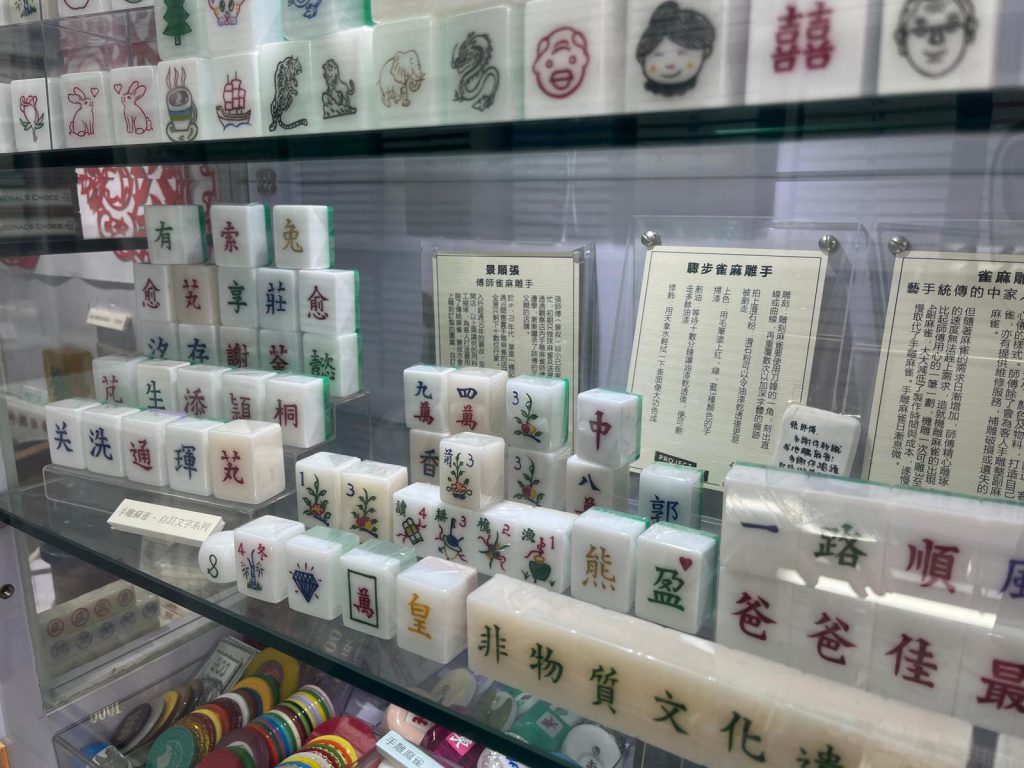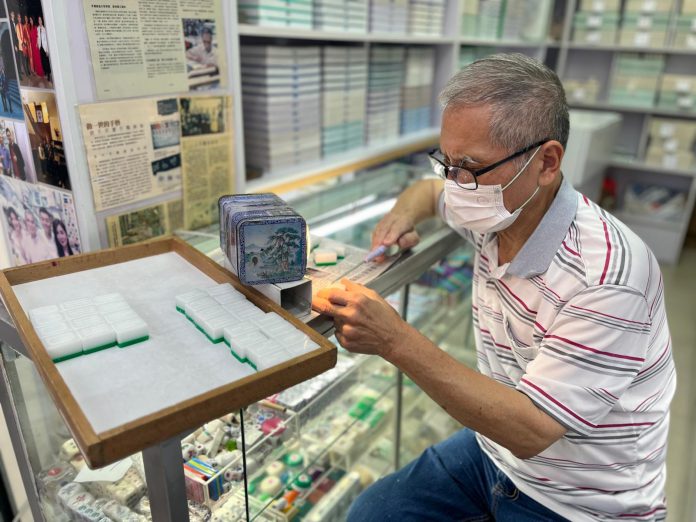A mahjong maker insists on making hand-carved mahjong.
By Kathy Yee
Cheung Shun-king is one of the remaining three artisan mahjong tile carvers in Hong Kong.
The 70-year-old master only takes a day off once a year, dedicating the rest of his time to the art of hand-carving mahjong. The store opens at 10 a.m. daily and he works until late.
“I have become accustomed to sleeping as late as 3 a.m. I will continue working until nobody buys it anymore. I will not retire,” Cheung says.
“The hand-carved mahjong we used to enjoy playing with have gradually been replaced by machine-carved ones. As time goes by, this traditional skill that was once popular is now fading out,” he says.

Cheung has been working in Biu Kee MahJong, a family business founded around 60 years ago by his grandfather. He inherited it from his father when he was in secondary school. “Biu” is his father’s name.
Cheung started learning carving mahjong when he was in secondary school and he has been doing this job his whole life. When he was younger, he tried working part-time for a day or two, but later his family called him back home to help.
“I followed the old mahjong’s footsteps and became skilled at making it. Now I can make it without even looking at tiles,” he says.
A mahjong set takes one month to a year to be completed. It is usually used as decorations so the customers are not in a hurry to receive their orders.
Hand-carved mahjong seems to be less attractive to Hong Kong people but more and more foreigners are buying them.
“Half of my customers are from China and the other half are from foreign countries like the United States and Britain. Most of the customers were from Hong Kong, but those who wanted to buy hand-carved mahjong had already bought them,” Cheung says.
An online ordering system is available on Facebook for foreign customers. Biu Kee MahJong provides overseas shipments.
“Each hand-carved mahjong is unique. The style of each artisan mahjong tile carver is different. You can spot the differences if you are familiar with their style. But for the machine-carved ones, the machines have been adjusted to produce a specific size to ensure the uniformity in the output,” he says.

To attract more customers, Cheung creates tailor-made tiles featuring characters or cartoons. He charges one hundred dollars per character. The most popular characters are “Happy Birthday” and “Get rich”.
At the verge of disappearing, Cheung wants to pass down the culture. He teaches people the background of hand-carved mahjong and the making process by working with social enterprises.
“Before COVID-19, many people were interested in hand-carved mahjong, especially foreigners, but now fewer are interested. The hand-carved mahjong culture depends on the media to spread awareness and promote it these days,” he says.
However, Cheung does not plan to train apprentices.
“It is actually bad for newcomers to join the industry, especially when it is hard to make a good living. It takes years of practice to master the skills,” he says.
Cheung is optimistic about the current situation as he believes there are advantages when hand-carved mahjong is less popular.
“With fewer customers, I have more time to create. I don’t need to rush and can focus on being more meticulous and produce high-quality mahjong,” he adds.
Sub-edited by Cynthia Chan








































